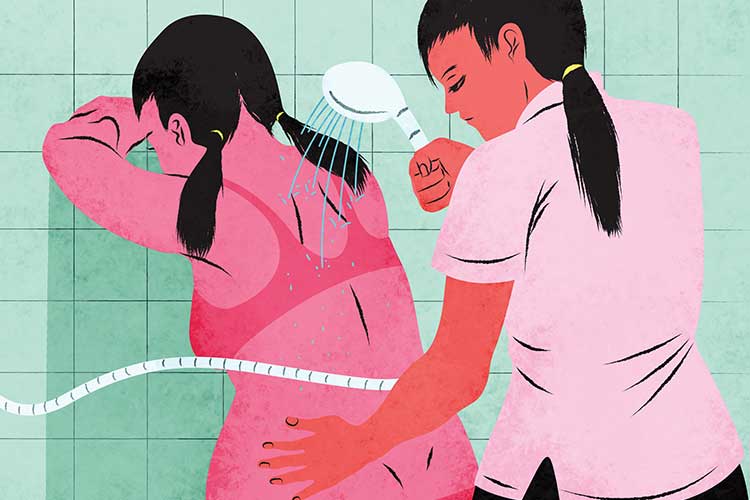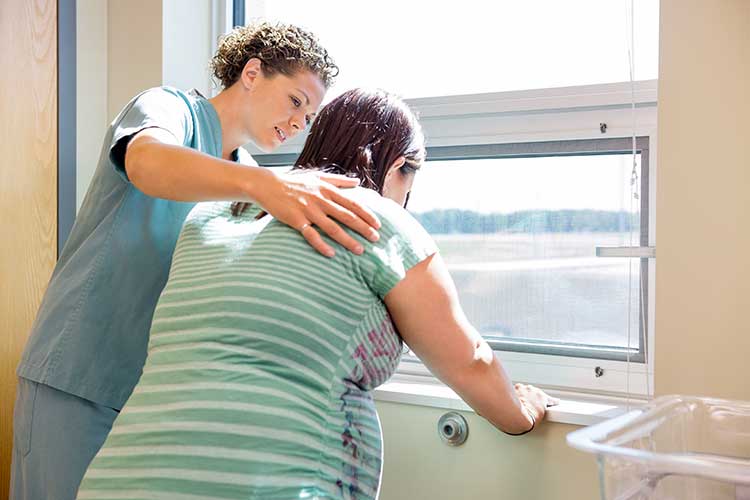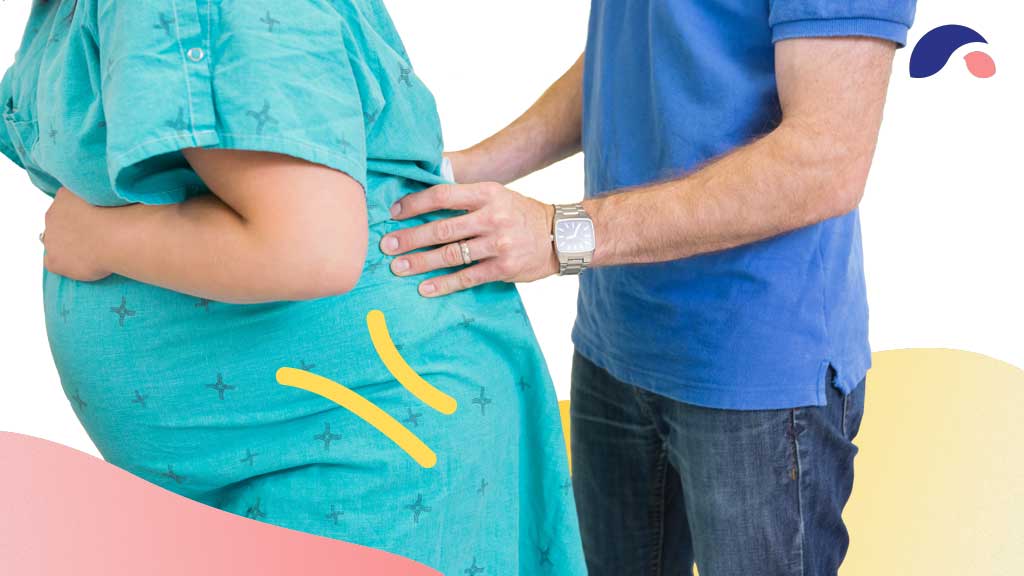For many years now, midwives have been voicing concerns about the dehumanisation of people’s birth experiences. This, in turn, has led to calls for a return to continuous, one‐to‐one support for patients during labour (Bohren et al. 2017).
Yet, whilst many midwives instinctively agree with this concept, the term one-to-one care lacks a clear definition, and its multiple meanings make policy development and consistently high-quality research difficult to achieve (Sosa et al. 2012).
So, what exactly does one-to-one care involve, and why is it so important in labour?
What is Meant by One-to-One Care?
One of the greatest challenges in evaluating the effectiveness of one-to-one care is defining when it starts and finishes.
For example, many doula programs begin support during pregnancy, provide continuous support during labour and birth, and may provide follow-up care for several months postpartum. In hospital settings, however, continuous support is usually defined as care from the point of admission through to delivery.
Bohren et al. (2017) also suggest that greater clarity is needed in the definition of the term ‘continuous’, pointing out that it could mean anything from ‘no interruption’ to ‘as continuously as possible.’
Defining what is included in one-to-one care is also subject to variability, but typically includes:
- Emotional support, including continuous presence, reassurance and praise from a trusted companion
- Information on the progress of labour and advice regarding coping techniques
- Promoting comfort via touch, massage, warm baths or showers
- Encouraging mobility and adequate fluid intake
- Advocacy and helping the patient express their wishes.
(Bohren et al. 2017)

Short and Long-Term Benefits
The positive effects of continuous, one-to-one support during labour are well-documented (Clack 2021). Benefits range from an improved birthing experience to long-term benefits for the whole family, as the quality of the birthing experience can influence the birthing parent’s mental and emotional wellbeing for years to come.
Bohren et al. (2017) suggest that patients who receive continuous support during labour are more likely to:
- Give birth spontaneously
- Have a shorter duration of labour
- Be more satisfied with their birthing experience.
They are also less likely to:
- Need pain relief
- Have a caesarean birth, or an instrumental birth
- Have babies with a low five‐minute Apgar score.
Why is One-to-One Support so Effective?
It’s broadly recognised that continuous support enhances the progress of labour and improves the birthing person’s feelings of control and competence, reducing the need for medical interventions - but how can these effects be explained?
One theory proposed by Bohren et al. (2017) suggests that the continuous presence of a trusted companion may help shield the patient from the stressful environment and routines of the delivery room. Another theory suggests that reducing stress levels during labour makes the need for medical intervention much less likely.
Some also consider continuous support an additional form of pain relief that may lead to fewer interventions in labour. A literature search by Knape et al. (2013) also suggests that emotional support delivered by one key carer whom the patient trusts seems to be effective for decreasing overall intervention rates during labour.
In addition to higher rates of spontaneous vaginal birth, less need for analgesia and greater overall satisfaction, one-to-one care also appears to shorten the duration of labour and have a favourable effect on the baby, with fewer infants displaying low five-minute Apgar scores if their parent has received continuous one-to-one care.
Yet, Hodnett et al. (2013) make the point that not all one-to-one care is equal in its effectiveness. For example, they discovered that continuous support was most effective when the provider was neither part of the hospital staff nor the patient’s social network, and in settings in which epidural analgesia was not routinely available.
Implications for Future Research
To date, there seems to be relatively little high-quality research on the long-term benefits of one-to-one care in labour. As Bohren et al. (2017) suggest, further studies into postpartum benefits and long-term outcomes are needed to complete the picture. They suggest that research in the following areas would be particularly helpful:
- The effects on breastfeeding
- Low self-esteem and difficulty parenting
- Poor parent-infant interactions.
In other words, it seems that there are many more benefits yet to be discovered that extend beyond the critical period of labour itself.
One research project that does stand out, however, is the COSMOS trial (McLachlan et al. 2008), which compared standard maternity care with one-to-one midwifery support. During the trial, it was shown that assigning an individual midwife to a patient throughout their pregnancy, birth and early postnatal period resulted in some valuable benefits, notably:
- Fewer caesarean births
- Reductions in epidural pain relief during labour
- Reduced length of hospital stay
- Fewer episiotomies
- Fewer low birth weight babies
- Reduced admissions to neonatal special and intensive care.
Based on these findings, the report recommended the adoption of caseload midwifery, describing the one midwife, one patient policy as the gold standard of care. Interestingly, midwives benefited too, with much lower rates of burnout and greater job satisfaction.
Practice Points

All too often, modern maternity care means patients are required to experience institutional routines that may negatively impact birth outcomes and satisfaction levels.
Yet, moving away from custom and tradition and implementing change, however convincing the research is, can pose challenges for the maternity team in terms of staffing levels and allocation of resources. The one midwife to one patient ratio is an ideal goal to aim for and should be available for all patients in labour (Sosa et al. 2018), but further questions have yet to be answered about the role of the doula, or even if the continued presence of a supportive friend can achieve the same beneficial results.
Future research may help answer these questions by clarifying what happens during labour between the patient and the range of people who support them one-to-one (Sosa et al. 2012).
What has been proven beyond doubt is that continuous one-to-one support during labour has clinically meaningful benefits for both patients and their babies, with no known associated harms (Hodnett et al. 2013).
What is needed now is a further exploration of how continuous support can be provided in different contexts and an evaluation of potential long-term benefits that extend beyond the delivery room.
Topics
References
- Bohren, M, Hofmeyr, G, Sakala, C et al. 2017, ‘Continuous Support for Women During Childbirth’, Cochrane Database of Systematic Reviews, viewed 22 August 2025, https://www.cochranelibrary.com/cdsr/doi/10.1002/14651858.CD003766.pub6/full
- Clack, DC 2021, ‘Midwife as Support Person, an Australian Perspective’, All4Maternity Blog, 11 January, viewed 22 August 2025, https://www.all4maternity.com/midwife-as-support-person-an-australian-perspective/
- Hodnett, E, Gates, S, Hofmeyr, G & Sakala, C 2013, ‘Continuous Support for Women During Childbirth’, Cochrane Database of Systematic Reviews, viewed 22 August 2025, https://www.cochranelibrary.com/cdsr/doi/10.1002/14651858.CD003766.pub5/full
- Knape, N, Schnepp, W, Krahl, A & zu Sayn-Wittgenstein, F 2013, ‘The efficiency of One-to-one Support During Labour - A Literature Analysis’, Zeitschrift für Geburtshilfe und Neonatologie, vol. 217, no. 5, viewed 22 August 2025, https://europepmc.org/article/med/24170441
- McLachlan, H, Forster, D, Davey, M et al. 2008, ‘COSMOS: COmparing Standard Maternity Care With One-to-one Midwifery Support: A Randomised Controlled Trial’, BMC Pregnancy and Childbirth, vol. 8, no. 1, viewed 22 August 2025, https://bmcpregnancychildbirth.biomedcentral.com/articles/10.1186/1471-2393-8-35
- Sosa, G, Crozier, K & Robinson, J, 2012, ‘What is Meant by One-to-one Support in Labour: Analysing the Concept’, Midwifery, vol. 28, no. 4, viewed 22 August 2025, https://www.sciencedirect.com/science/article/abs/pii/S0266613811000957
- Sosa, G, Crozier, K & Stockl, A 2018, ‘Midwifery One-to-one Support in Labour: More Than a Ratio’, Midwifery, vol. 62, viewed 22 August 2025, https://www.sciencedirect.com/science/article/abs/pii/S0266613818301219
 New
New 
